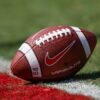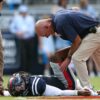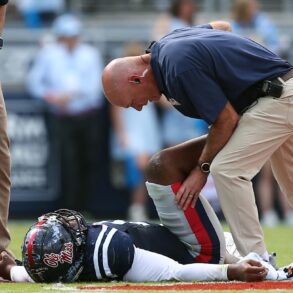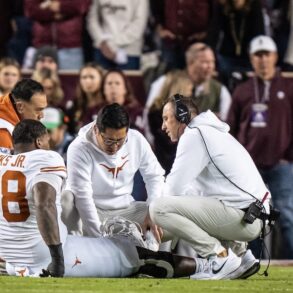There are certain topics that I know people are going to read about no matter the time of year. Like realignment. Or Connor Stalions.
Thankfully this week’s Mailbag has both.
(Note: Submitted questions have been lightly edited for length and clarity.)
Why is Michigan fighting the NCAA so hard regarding the ongoing investigations? Does this mean significant sanctions are coming to the Michigan football program and their current head coach? — Terry G.
Everyone fights the NCAA now. Everyone thinks they’re being unfairly persecuted. But Michigan has been particularly defiant about the Connor Stalions stuff from the time it broke, so I’m not surprised it’s maintaining that approach. The strategy all along has seemingly been: this guy was acting on his own, we knew nothing about it, it didn’t help us anyway.
Advertisement
But as of now, we’re lacking specifics on what exactly Michigan is charged with. The school has not released the Notice of Allegations, which is frustrating because it should at least be subject to a public records request. Nor has it leaked. But Yahoo last week reported some of the contents of Michigan’s response to the NOA, including a mention that six of the alleged violations are considered the most serious type, Level I. If so, they could definitely lead to major sanctions, whatever that consists of these days.
Mind you, the enforcement staff, which issues the NOA, is essentially the prosecutor. The Committee on Infractions is essentially the judge who hears the case. It’s highly unlikely it would throw out the case entirely, but it could downgrade some of those charges, which, the report says, Michigan is claiming are “without merit or credible evidence.”
It’s an interesting argument, given the evidence reportedly includes a spreadsheet that documents everything Stalions did. As confirmed in the Netflix doc. Also, they have the deleted text messages between Stalions and Sherrone Moore, which Moore says are completely innocent
To me, the most interesting reveal from that report was the anonymous tipster who touched off the whole scandal was not Ryan Day, or Day’s private investigator brother or any other nefarious figure out to get Michigan, but, in fact, a mole on Michigan’s campus. Who saw that plot twist coming?
I understand success creates new opportunities for assistant coaches, but do you find anything unusual about Ohio State’s losses of both OC Chip Kelly and DC Jim Knowles? — Craig S., Columbus, Ohio
Nothing unusual about Kelly, who came on “The Audible” this week to discuss his move to the Raiders. He’s coached in the NFL before, so it was always a possibility he’d go back at some point. He clearly has a lot of respect for Pete Carroll, but also for minority owner Tom Brady, who seems to be taking a bigger role in the franchise than some anticipated. (While also calling the Super Bowl. Nothing weird about that.)
Advertisement
Knowles is a different situation entirely. CBS Sports had an interesting report earlier this week indicating friction between Knowles and Ryan Day, who became more involved in the defense after the Oct. 12 Oregon loss, and a difference in philosophies between Knowles, who loves three-man fronts, and longtime D-line coach Larry Johnson, who’s always had four D-linemen.
It sounds like if it hadn’t been Penn State, it would have been Oklahoma that gave Knowles his very lucrative exit plan.
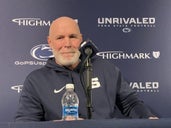
GO DEEPER
After full circle move, can DC Jim Knowles unlock Penn State’s championship potential?
You don’t often see a national championship team lose both coordinators immediately afterward. I’m mostly surprised those opportunities were still waiting when Ohio State’s season didn’t end until Jan. 20. And now the Buckeyes have openings to fill. This coordinator coaching carousel is proving to be more eventful than the head-coaching cycle.
Case in point …
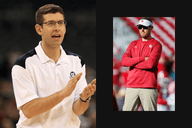
GO DEEPER
The 10 most shocking college sports transactions — no Luka for AD, but lots of fleeing coaches
How much different do you think Alabama’s offense will be with Ryan Grubb as OC/play caller as he reunites with Kalen DeBoer? — Drake C., Columbia, Tenn.
It’s a positive development for Alabama fans. Grubb played an instrumental role in those prolific Michael Penix Jr. Washington offenses, but perhaps more importantly, Grubb and DeBoer have worked together for a dozen seasons, spanning four schools (Sioux Falls, Eastern Michigan, Fresno State and Washington). They should be highly compatible when it comes to scheme and play calling.
I believed going into last season Jalen Milroe, whose biggest strength as a passer was his deep balls, would thrive in DeBoer’s offense. Whoops. But, that was the Nick Sheridan version of DeBoer’s offense. It could be that the version we saw at Washington was a product of Grubb as much as it was DeBoer himself.
It’s difficult to guess what specific changes we’ll see, though, without knowing who will be Alabama’s quarterback and what his strengths are. Former five-star Ty Simpson, an Alabama backup for three seasons, is the leading contender. He’s not as fast as Milroe, but he can move. I could see him excelling at RPOs, like this nifty keeper during mop-up duty against Western Kentucky.
Whoever gets that job will have the opportunity to throw to freshman sensation Ryan Williams, established No. 2 guy Germie Bernard, who played for Grubb at Washington, and Miami transfer Isaiah Horton (56 catches for 616 yards last season). If nothing else, I can’t wait to see what the OC who helped develop Rome Odunze/Ja’Lynn Polk/Jalen McMillan can do with this group.
Advertisement
Both Oregon’s Dante Moore and Texas’s Arch Manning were five-star QB recruits in 2023. Moore was thrown into the fire too early at UCLA, but since then both have been backups with very little playing time. So why in most of the Way Too Early rankings is Texas ranked high in no small part to their QB position assumed to be set, while Oregon is dropped in part due to “questions” at that position? — Don D., Eugene, Ore.
I’m not someone who just assumes Arch is going to come out and torch all comers this season, but it’s not like he hasn’t played at all. He made two starts last season, albeit against Louisiana-Monroe and Mississippi State, and looked pretty good. Against the Bulldogs, in particular, he went 26 of 31 for 325 yards, two TDs and no INTs while also running for a TD. Texas used him situationally as a runner, including in the semifinal against Ohio State, and we saw glimpses of how he’ll impact games with his legs.
Mind you, that’s considerably fewer reps than Moore saw at UCLA in 2023 when he made five starts. Unfortunately, though, he really struggled. He completed just 53.5 percent of his throws that season, had an 11-to-9 TD-to-INT ratio and got sacked at least four times in four different games (25 total). He may be much improved after a year developing behind Dillon Gabriel at Oregon, but still, I have more questions about him than I do Arch.
But that’s not the main reason I had Texas and Oregon six spots apart in my rankings. It’s the defenses. Steve Sarkisian and DC Pete Kwiatkowski have formed an elite unit in Austin that figures to reload this fall.
Dan Lanning and DC Tosh Lupoi have been attempting the same in Eugene, but it’s just not there yet. The Big Ten title game (against Penn State) and Rose Bowl (against Ohio State) exposed that. They are bringing in another impressive portal class that could plug some of the holes. But again — more questions.
It seems writers have decided the Michigan sign-stealing thing was no biggie. Regardless of where you are in the issue, if pressed, how would you make the argument that it was actually one of the biggest scandals of the past 20 years? — Josh I.
This is at least the fourth time I’ve led the Mailbag with a Connor Stalions-related question, so clearly, I think it’s a big deal.
But I cannot in good conscience make an argument it’s one of the biggest college sports scandals of the last 20 years. I’d say it’s more so one of the most amusing.
Rewind everything to 2010 before Colorado and Nebraska left the Big 12 and assume the most important factors for potential realignment are brand, TV ratings and streaming (like now) instead of cable households, conference networks and market size (like then). How does power conference realignment unfold differently (if at all)? — Reggie C., San Diego
Great question.
Advertisement
That particular round of realignment coincided almost exactly with the beginning of cable’s decline. The number of U.S. cable households peaked around the start of the decade at about 100 million. The Pac-10 got a then-monstrous deal in 2010 in large part because ESPN and Fox teamed up to head off Comcast, which was looking to beef up NBC Sports Network. ESPN would launch Longhorn Network in 2011, Fox used Big 12 and Pac-12 rights to help launch FS1 in 2013 and SEC Network debuted in 2014.
I doubt any of that would happen today, with the number of cable subscribers continually falling by around 4-5 percent a year.
Some moves would still be no-brainers. The Big Ten would have still grabbed Nebraska, which was still a massive brand then. Texas A&M still would have been ticked at Texas, and the SEC would have gladly added the state of Texas for recruiting purposes. The Pac-10 still needed two more teams to get to 12 and start a championship game, and those are still likely Colorado and Utah.
A key question is whether the ACC would have still taken Syracuse and Pittsburgh. Those were not cable plays as much as John Swofford’s longstanding attempt to take over the East Coast. That decision would have affected several subsequent dominos — most notably Notre Dame joining the ACC but also whether the Big East stays together. Either way, Rutgers and Maryland to the Big Ten likely never happens.
But if the emphasis on broadcast and streaming had kicked in a decade earlier, we may have just seen the same consolidation of brands take place sooner. Maybe Oklahoma and Texas join the Big Ten or SEC from the jump. Maybe the Big Ten and USC don’t wait until 2021 to take the plunge.
And ultimately, the forces that led to the Pac-12’s demise would have been the same. That conference was always going to fall further behind the Big Ten and SEC. It would still lack the number of rabid fan bases as the Big 12. Though maybe in this alternate timeline, the league’s presidents don’t hire a commissioner capable of conducting a competent media rights negotiation.
Help us see the forest through the trees. What is the anticipated timeline over the next few years regarding the $20.5 million per school revenue sharing, collective bargaining, CFP contract/format, etc.? — Noah B.
Yes, I can see why that would be helpful.
Advertisement
The first key date is April 7. That’s the day Judge Claudia Wilken will hold a hearing to decide whether to give final approval to the House v. NCAA settlement, which would kick into motion the new revenue-sharing model and that $20.5 million per school cap.
Schools have been signing deals with athletes on the assumption this will go into effect next school year. However, numerous affected parties have been filing objections to various elements of the settlement, and the Department of Justice filed a statement to the judge last month urging her to remove the salary cap aspect.
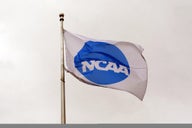
GO DEEPER
NCAA’s $2.8 billion settlement faces objections before final approval
So, the proceeding is not exactly a formality. And even if it does get approved, the NCAA is not remotely out of the woods on compensation matters. A separate lawsuit in Colorado, Fontenot v. NCAA, remains ongoing. Front Office Sports reported this week that more than 150 athletes have opted out of the House settlement to join the plaintiffs in Fontenot.
The CFP contract/format is an entirely separate matter. The commissioners and presidents who oversee the CFP will meet again in the spring to discuss potential changes to the format. The vibe I got coming out of their meeting in Atlanta the day before the national championship game was likely nothing will change this coming season, the last one under the CFP’s original 12-year contract.
But almost everything is on the table for 2026, including expanding the field beyond 12, and I’m bracing for the Big Ten/SEC — which no longer require approval from the other conferences — to propose something ridiculous, like eight auto-bids each. The two leagues are holding their own joint meeting in New Orleans on Feb. 19 and this figures to be one of the primary subjects.
As for collective bargaining, I’d point you to last week’s Mailbag, where I wrote about the momentum for that movement stalling due to political reasons. That doesn’t mean it won’t happen one day, but nothing is imminent.
As we anticipate the 2025 season, how have uneven schedules been adjusted, if at all? We know Texas flipped its SEC schedule from home to away (and vice versa). What about Indiana? — Mark T. Charlotte, N.C.
It’s hard to do much about it because no one knows for certain which teams will be good or bad the next year. Remember, Indiana last year played both teams from the previous season’s national championship game, Michigan and Washington. But they weren’t nearly the same caliber and did not do much for the Hoosiers’ schedule strength. (In hindsight, the Wolverines stifling Indiana’s offense in the second half of their 10th game was a harbinger of things to come against Ohio State and Notre Dame.)
Advertisement
Also, every conference does schedules differently. The SEC announced a year ago the teams would play the same opponents in 2025 as they would in 2024, but with the sites flipped. Hence, Texas. The Big Ten went even further and announced its 2024-28 schedules all at once. You do see some differences this season, including Indiana picking up Oregon and Penn State, both on the road.
The Big 12 just announced its 2025 schedule this week, and it appears the conference took an NFL approach in giving harder schedules to the best teams and vice versa. Colorado, which finished in a four-way tie for first, got all three of the other teams, Arizona State, BYU and Iowa State, plus 9-4 teams TCU and Kansas State. Defending champ ASU drew ISU, CU, TCU and Baylor, which went 6-3 in the conference. Conversely, last-place Oklahoma State drew just one of the four first-place teams, Iowa State.
The thing is, I expect the Big 12 to swing wildly from year to year anyway, and who the heck knows which schedules will prove to be the toughest? You could probably draw names out of a hat and get the same result.
End-of-day, conferences are too big to have any sort of scheduling balance. The committee needs to consider that when evaluating teams. I didn’t feel they did that for most of last season.
You have to plant your flag in one camp or the other: Will Jaxson Dart be a successful starting NFL QB or not? — Jessica S., Los Angeles
I am quite possibly the last person on Earth whose opinion you should trust on NFL quarterback prospects. I’m the same person who wrote an opus during the 2018 draft season about why Josh Allen was going to be a colossal bust. I also would have bet you $1 million during the 2015 draft cycle that Marcus Mariota would become an All-Pro, and I would have taken Tua Tagovailoa over Joe Burrow in 2020.
So, I mostly stay in my lane now.
Dart was very impressive for most of his three seasons at Ole Miss, particularly this past one, when he threw for 4,279 yards and finished as the nation’s top-rated passer (180.7). But if you look closer, most of his gaudy stats came against the lesser opponents on the Rebels’ schedule — a combined nine TDs against Furman and Georgia Southern, 515 yards and six TDs against a .500 Arkansas team, 404 yards and four TDs against a hollowed-out Duke team in the bowl game.
Advertisement
Whereas he had miserable days in losses to Alabama and Georgia in 2023 and to LSU and Florida in 2024. Even in Ole Miss’s big win against the Bulldogs last year, he went a modest 13 of 22 for 199 yards, one TD and one INT.
Having said all that, history says there will be multiple NFL starting QBs from this draft. And beyond Sheduer Sanders and Cam Ward, neither of whom are sure things themselves (though I do really like Sanders), there’s no one else in the class who I’d definitely put ahead of Dart.
And that’s as close to a hot take you’re going ever get from me on draft prospects ever again.
(Top photo: Douglas P. DeFelice / Getty Images)
This post was originally published on this site be sure to check out more of their content.


